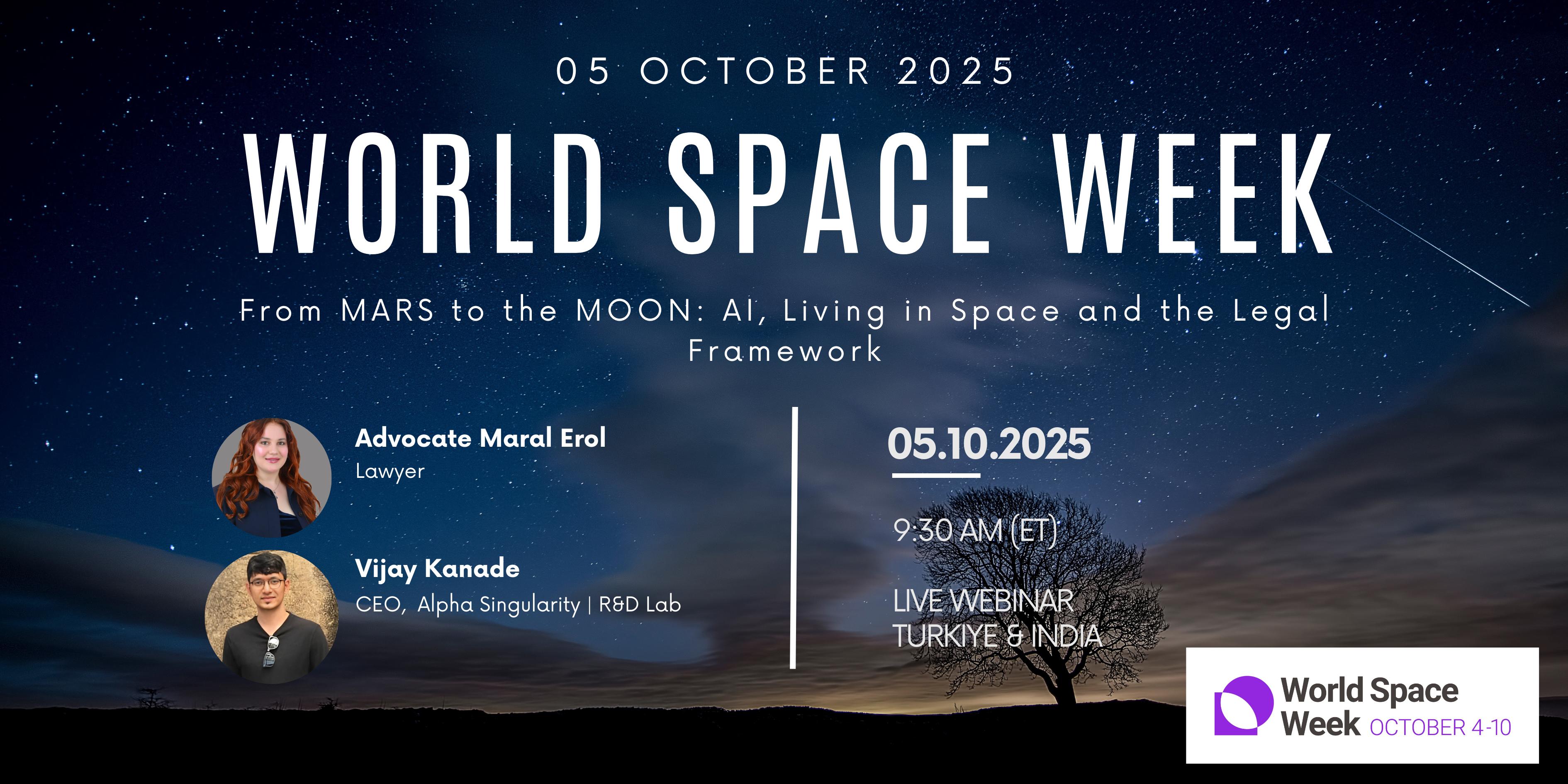Invited Speaker
 |
Skyline Space, an official space tutor partner of ISRO & IN-SPACe |
|
Space Sustainability: Tackling Space Debris (World Space Week, October 2024)
Vijay Kanade |
 |
VCA Education, a Canadian Company based in Toronto, offers professional development courses for Healthcare Professionals. |
|
Artificial Intelligence for Imaging Technologists - Live Webinar (September 27, 2025)
Euclid Seeram, Vijay Kanade* |
Advocate Maral EROL - Ankara Bar Association, Ankara, Turkiye. |
|
From Mars to the Moon: AI, Living in Space And the Legal Framework - Live Webinar (World Space Week, October 05, 2025)
Advocate Maral Erol, Vijay Kanade* |


